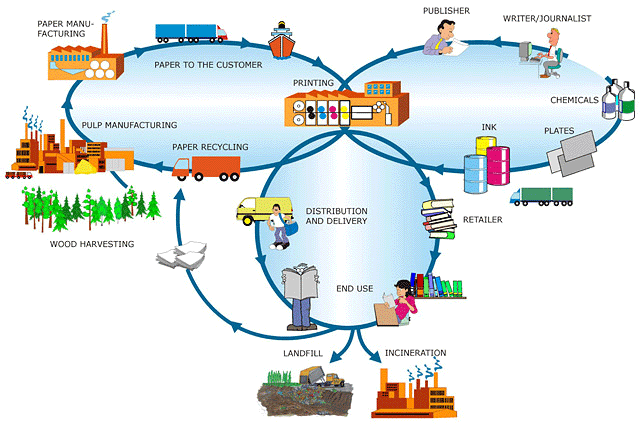

The VTT study showed that greenhouse gas emissions produced by a single newspaper during its entire life cycle correspond to a car journey of approximately one kilometer. The carbon footprint of a book bought from a store is equivalent to the greenhouse gas emissions of a car journey of approximately 7 kilometers. The research gives information about the environmental impacts' magnitude related to products of the print products' group.
The carbon footprint of newspapers mostly comprises emissions caused by the electricity and heat production required for making the product as well as greenhouse gas emissions resulting from transport. In addition, methane is produced as a result of the decomposition of newspapers deposited in landfill sites.
Emissions resulting from the use of purchased electricity in paper production and printing are responsible for approximately 50% of the carbon footprint of a typical Finnish newspaper. If all of the purchased electricity required for the production of newspapers constituted what is known as "green electricity," such as wind power or hydropower, the carbon footprint of a typical Finnish newspaper would drop by approximately 40%.
The carbon footprint of an annual volume of daily newspapers amounts to approximately 75 kg of carbon dioxide equivalents and that of a single newspaper to approximately 210 g. The carbon footprint of an annual volume of daily newspapers is equivalent to the greenhouse gas emissions of a car journey of 456 kilometers.
The carbon footprint of an annual volume of weekly magazines is equivalent to the greenhouse gas emissions of a journey of 45 kilometers by a car. Based on the assumptions made in the study, the greenhouse gas emissions produced over the entire life cycle of a single magazine are therefore equivalent to a car journey of approximately one kilometer.
The carbon footprint of a book is equivalent to the greenhouse gas emissions of a journey of about 7 kilometers by car. According to calculations, the carbon that remains bound to a printed paper product such as a book reduces after five years the carbon footprint caused by the production stage by approximately 5%. After 100 years, the drop is approximately 75%. In the study, the life cycle of books was followed from the sourcing of raw materials to the retailer's warehouse. The last stage of the life cycle (recycling and waste management) was excluded from the examination.
The contribution of newspapers, books, and other paper products to the climate impacts of consumption by Finnish households in 2005 was small (approximately 1%). The biggest climate impacts of consumption by Finnish households were attributable to housing (28%), food products (16%), and transport (13%).
More information about this study is available online.
TAPPI
http://www.tappi.org/